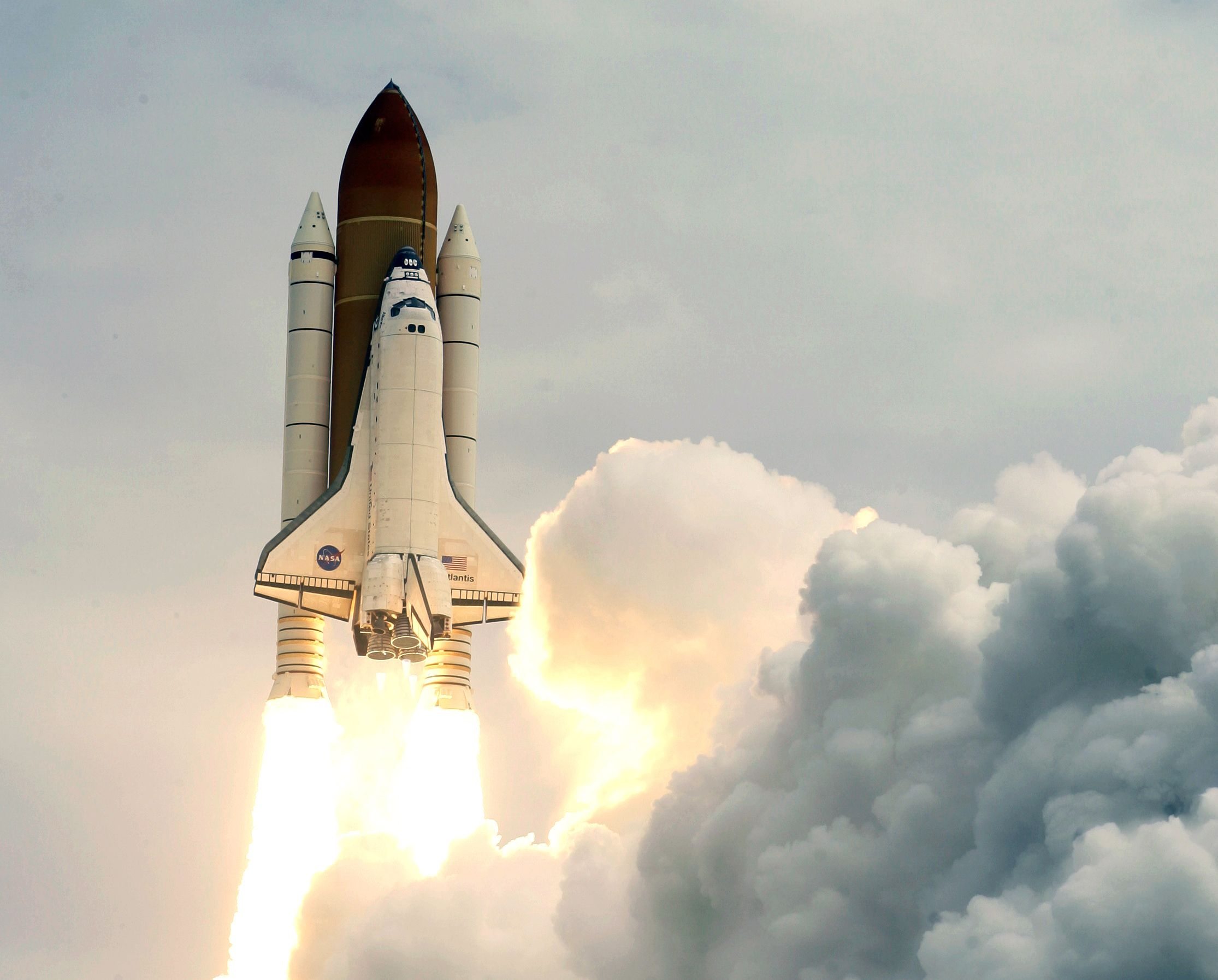CAPE CANAVERAL, Fla. — Space shuttle Atlantis rumbled like a freight train into orbit Friday in its historic last flight, lighting up a slate gray Florida sky that reflected the deep doubts about the future of the U.S. human spaceflight program.
The orbiter disappeared into dense clouds just 20 seconds after lifting off from the Kennedy Space Center, leaving crowds who flocked to the region craning to get a final glimpse of the iconic spacecraft.
Storms across the Gulf of Mexico had threatened to delay the launch, but the skies miraculously cleared Friday morning and set up the conditions for a perfect launch for the 30-year-old program. The blastoff attracted hundreds of thousands of visitors outside the space center and politicians, celebrities, former astronauts and journalists inside.
After the shuttle had cleared the launch pad and disappeared into the sky, emotions across the space center soared, as workers who had shared careers hugged over the successful blastoff and more than a few grizzled NASA veterans had tears in their eyes.
“I don’t see how anybody who comes down here to see a launch doesn’t choke up,” said Michael Moses, the shuttle’s launch integration manager.
The emotional high, however, was accompanied by renewed questions about the future of U.S. efforts in space.
Top NASA officials said the final shuttle flight is a retreat in U.S. leadership of human spaceflight, but marks the start of a new era that eventually will turn over routine low-Earth flights to private industry and refocus the space agency on far more difficult deep space missions.
“We are going to be going through a tough time,” acknowledged Robert Cabana, director of the Kennedy Space Center and a former astronaut. “Change is hard. (But) you can’t do something better unless you have change. We are making progress.”
But industry leaders say the space agency’s vision for the future is unclear. It has yet to disclose details of a plan to build a new heavy launch rocket, the exact destination of future missions and a formal schedule.
“The entire space community is waiting for direction from NASA,” said Jim Maser, president of Pratt & Whitney Rocketdyne. “We have 50 years of hard-fought lessons learned in manned spaceflight that’s now at risk of being lost without a specific plan going forward.”
Those concerns were secondary issues Friday, because NASA officials said they have a challenging 12-day mission ahead, so busy that they hope to extend the flight by one day before Atlantis makes its final landing.
The main goal of the mission was to deliver one last load of supplies that will be used on the International Space Station over the course of coming years. A module in the shuttle cargo hold contains 2,680 pounds of food, 4,340 pounds of spare parts and 1,780 pounds of science gear.
“They have this thing jam-packed,” said NASA spokesman Allard Beutel.
The four astronauts are scheduled to spend five days unloading the cargo and stowing it aboard the International Space Station, once it docks on Sunday.
In addition, the astronauts will deploy a small experimental Defense Department satellite and a research payload that will test technologies for refueling spacecraft in orbit.
The launch Friday went smoothly, in part because NASA has gained so much experience dealing with glitches that became routine with such a complex system. Engineers dealt with a malfunctioning oxygen pump, a lightning strike and a balky sensor on a launch platform in the day before liftoff.
The sensor problem stopped the countdown at T-minus 31, evoking gasps from the crowd. But engineers determined quickly that the glitch was not serious and resumed the countdown with less than one minute remaining in the launch window necessary to rendezvous with the space station.
But the weather was the one thing NASA could not control, and up until late Friday morning the chances of a launch were put at only 30 percent. “We got lucky is the way you could put it,” said launch director Michael Leinbach.
Ominous rain clouds dispersed and Atlantis took to the skies at 11:29 a.m. EDT to the delight of onlookers. Not long after the shuttle disappeared from view, the reality settled in that the end of an era was at hand.
The shuttle helped build the International Space Station, launched and later fixed the Hubble Space Telescope, and sent robotic probes to explore Venus, Jupiter and the sun. In all, 358 astronauts reached outer space on the shuttle; just 43 had gone before.
“It was a great era in human spaceflight, but it’s time to move on,” said astronaut Mike Massimino, who flew on the shuttle twice, including a Hubble repair mission. “NASA has a bright future ahead of it.”
Deputy NASA chief Lori Garver said the final launch was a moment both of pride and sadness, culminating a highly successful program that had done so much to advance technology and science over the last three decades.



